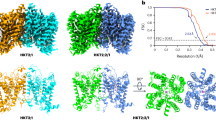Abstract.
The plasma membrane proton pump ATPase (H+-ATPase) plays a central role in transport across the plasma membrane. As a primary transporter, it mediates ATP-dependent H+ extrusion to the extracellular space, thus creating pH and potential differences across the plasma membrane that activate a large set of secondary transporters. In several species, the H+-ATPase is encoded by a family of approximately 10 genes, classified into 5 gene subfamilies and we might ask what can this tell us about the concept, and the evolution, of gene families in plants. All the highly expressed H+-ATPase genes are classified into only two gene subfamilies, which diverged before the emergence of present plant species, raising the questions of the significance of the existence of these two well-conserved subfamilies and whether this is related to different kinetic or regulatory properties. Finally, what can we learn from experimental approaches that silence specific genes? In this review, we would like to discuss these questions in the light of recent data.
Similar content being viewed by others
Author information
Authors and Affiliations
Additional information
Electronic Publication
Rights and permissions
About this article
Cite this article
Arango, M., Gévaudant, F., Oufattole, M. et al. The plasma membrane proton pump ATPase: the significance of gene subfamilies. Planta 216, 355–365 (2003). https://doi.org/10.1007/s00425-002-0856-8
Received:
Accepted:
Issue Date:
DOI: https://doi.org/10.1007/s00425-002-0856-8




